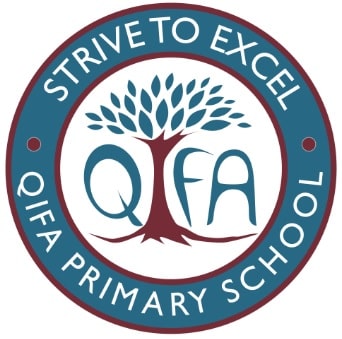Qifa Primary School

What Are The Skill Development Methods Used in Qifa School?
The Ministry of Education (MOE) and its stakeholders recognise it for its challenging academic programmes, exceptional Aesthetics and Co-curricular achievements and various other programmes that cater to the growth of its students. The Ministry of Education chose the school to host an Applied Learning Program on Effective Communication in April 2014. (ALP). In keeping with MOE’s 21st Century skills and student goals, the school aspires to grow every Qifa Primary School student into a confident person who communicates well. Volleyball has long been a popular sport in Qifa, having a long history.
Meta Description
The Char Yong Association founded Qifa Primary School, known as Khee Fatt Study Institution, in 1906. In the neighbourhood, Qifa is still a famous school.
Active Thinking Skills Development
Qifa Primary School teachings use visible thinking routines to help our students become more active thinkers. These thinking routines are basic but effective methods for explicitly teaching thinking skills and developing thinking dispositions.
To be successful communicators, students must learn to appreciate others’ various points of view while also being confident in sharing their own. Pupils are free to write down and share their ideas with their peers in a joyful and non-threatening learning atmosphere through apply learning curriculum.
Embracing Technology
Information, Communications, and Technology (ICT) are effectively used in Qifa to improve topic understanding and develop 21st Century Competencies through high-quality teaching and learning. The ICT department strives to “Future-ready and Responsible Digital Learners” following the MP4 objectives. We widen our focus beyond “Self-Directed Learning” and “Collaborative Learning” to a Total Curriculum focuses on students and values. The school’s ICT department works with the CCE department to develop and conduct Cyberwellness (CW) instruction, which based on three principles: “Respect for Self and Others,” “Safe and Responsible Use,” and “Positive Peer Influence.” To enable our students to take responsibility, we teach them social-emotional skills and solid principles.
The CCE Methodology
The whole-school strategy of using the Head (Moral Knowing), Heart (Moral Feeling), and Hands (Moral Action) principles to instil values and equip social and emotional competencies in our students drives CCE main programmes. It is accomplish through the CCE curriculum includes CCE lessons, Form Teacher Guidance Period (FTGP) and CCE Guidance Modules learning opportunities such as National Education (NE) commemorative days.
A Programme for Active Learning (PAL), Co-curricular (CCA), and Values-in-Action (VIA) activities. The numerous core programmes and activities are interwoven into every level to provide our students with the required knowledge, skills, and values to help them grow into “excellent character leaders,” “concerned citizens,” and “active contributors.”
PAL Module Characteristics
The kids’ heads, hearts, and hands are involved in PAL modules. They made with the following features in mind:
Nature is experiential.
Provide significant engagement for students through experiential learning in a secure setting. In reflection, students can share their thoughts and feelings while increasing their communication confidence.
Learning creative is included.
Allow children to apply their learning to a new context, enhance their understanding, find new connections to past skills and information, and discover aspects of themselves.
Allows children to express themselves creatively.
Children benefit from creative expression because it allows them to learn on a deeper level it is enjoyable and leads to problem-solving. Values education and social-emotional learning included.











